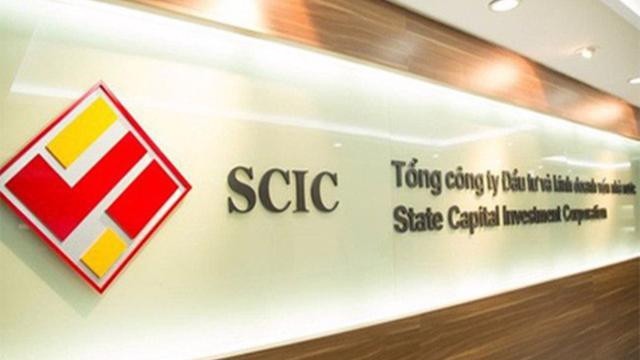Central bank calms foreign exchange market
Central bank calms foreign exchange market
During the last two weeks the domestic foreign exchange market saw continuous fluctuations in the forex rate between the dong and US dollar, although the forex rate on the inter-bank market was stable at VND20,820.

In particular, on February 20 the forex rate between the dong and dollar in the open market increased to 21,100 per dollar, up by VND80 compared with the rate on the previous day.
Accordingly, the forex rate at many commercial banks was also adjusted to between VND20,900 and VND21,036.
However, on February 22, the forex rate was cut by around VND100 per dollar after the central bank asked commercial banks to increase sale of dollars.
As a result, the USD/VND exchange rate listed at BIVD was VND20,970, down nearly VND79 per dollar compared with the rate listed on February 21. At Vietinbank, the forex rate was around VND20,840 and VND20,920 per dollar.
The forex rate at some other commercial banks including Eximbank and ACB was also reduced by VND80 to VND20,910 per dollar.
On February 25, the forex rate on the open market continued decreasing by between VND10 and VND20 per dollar compared with the rate late last week to VND20,840 and 20,920 per dollar.
However, on the morning of February 26, the forex rate at commercial banks increased again by VND10 and 20 per dollar, while it increased at VND21,140 on the open market.
Such strong fluctuations in the forex rate were blamed on many factors, one of which was the market’s increasing demand for dollars.
Many Vietnamese people often bought gold early in the year as they believe that gold would bring more luck for them during the year ahead.
At this time, many families who have children studying abroad have to buy US dollars to pay for tuition and living costs for the new school year.
The big difference in global and domestic gold prices has encouraged enterprises to buy US dollar to import gold bullion to make a profit.
Recent debates on adjustments of the forex rate between the dong and US dollar to support domestic enterprises’ exports have also contributed to raising the forex rate.
Some experts proposed devaluing the dong by 2 per cent to 3 per cent in the first quarter of this year in order to stimulate exports. This information was disseminated and mistaken for an official SBV plan. It has also contributed to making exchange rates increase after a long period of stability.
A rumour about the arrest of BIDV chairman also added to worries and encouraged many people to divest from the securities market, switching to US dollar bank deposits or gold.
During 2012, the forex rate on the inter-bank market was kept by the central bank at VND20,828 per US dollar while it was fixed at VND20,850 on the official market.
This stability was because the country’s foreign currency reserves were improved significantly thanks to the increasing remittance by overseas Vietnamese and export surplus.
In addition, the Government’s anti-dollarization policies have also begun proving effective so people’s demand for dollars has also reduced significantly.
The stability of the forex rate significantly supported the country’s import activities and consolidated people’s confidence in the Vietnamese currency for a rather long time.
So, in face of the strong fluctuations of the forex rate during recent days, the central bank has had to step in and affirm that it would pursue the policy of stabilising the forex rate until the end of the year.
The central bank has requested commercial banks to increase sales of the greenbacks while it has applied measures to narrow the gap between global and domestic gold prices. It has also committed not to devaluate the dong at this time.
In addition, foreign currency reserves are currently at a record high (about US$30 billion), and the SBV is capable of meeting market demand, so it would not be necessary to make an adjustment to the exchange rate at this time.
Growth target
The State Bank of Viet Nam has set a credit growth target of 12 per cent in 2013. The goal is not much higher than the 9 per cent rate recorded last year.
This modest growth target warns that the country’s economic situation will continue seeing several difficulties this year, particularly in the production sector.
Data from the central bank also notes that the credit growth rate during the first two months of the year was minus 0.16 per cent compared to the rate during late last year, proving that the domestic monetary market will still have to cope with many challenges in the coming time.
The minus credit growth also means that enterprises’ confidence in the recovery of the economy is still so weak that they do not want to invest more into production and business activities to reduce risks.
In addition, enterprises’ capital demand has yet to improve since their inventory problems are still unsolved. In particular, unsold industrial products from the first month of the year increased by 21.5 per cent over the same period last year.
The industrial production index (IPI) in January dropped by 3.2 per cent as compared with the figure during December last year. It is estimated that the IPI will be lower in February due to the Tet (Lunar New Year) holidays. An additional 4,000 enterprises have closed down during the new year.
Apart from the reasons mentioned above, banks themselves have not yet been active in pumping capital into the economy.
The banking sector’s profits in 2012 reduced by between 40 and 50 per cent as compared with figures from 2011. In other words, most banks did not fulfill their profit plans set for 2012.
The commercial banks’ unsatisfactory business results were due to high risk provisions against bad debts, as requested by the SBV.
This year, many commercial banks would have to continue to cope with problems related to bad debt and profit, particularly when the SBV’s Circular No 02/2013/TT-NHNN on asset classification, risk provisioning and unitisation of provisioning takes effect on June 1 this year.
Under the new circular, many debts of the banks would likely become bad debts, thus eating up their profits.
In face of such a situation, banks have been forced to become more cautious in lending to minimise bad debts.
The fact shows that banks are still active to mobilise people’s savings, however they prefer using mobilised capital to invest in government bonds with a low interest rate to investing in enterprises’ production and business activities to minimise risks.
To improve the situation, the central bank has planned to inject between VND100 trillion (US$4.80 billion) and VND150 trillion (US$7.20 billion) to settle bad debts, particularly those invested in the real estate sector.
However, the most important thing for the government now is to have measures to encourage the market’s aggregate demand, thus helping enterprises settle their inventories and therefore enable them to pay banks’ debts.
Petrol price
The Ministry of Finance has just made a decision, requesting petroleum product traders not to increase their retail prices in an attempt to ensure the stability of the macro-economy.
On February 27, the finance ministry issued a public letter (No 2624/BTC-QLG) to ask petroleum wholesalers not to raise prices. This is the third time so far this year the agency made the decision to keep petrol prices unchanged.
According to the ministry, due to the continuously increasing petroleum prices in the world market, the import price of petroleum products now stand at a very high level of over US$130 per barrel.
As a result, domestic retail prices are VND2,319 lower than import prices. Similarly, retail prices of Kerosene, diesel and fuel oil are respectively VND1,462, VND1,133 and VND986 lower than import prices.
The domestic petroleum retail prices are also much lower than the rates in regional countries. In particular, domestic retail prices of Ron 92 in Viet Nam have been VND2,000 lower than the rate in China per litre, VND4,000 lower than in Laos and VND5.300 lower than in Cambodia. These disparities have made many domestic traders suffer big losses (estimated at least VND1,800 per litre).
Having to cope with the losses, many petroleum traders proposed the finance ministry to allow a price increase. Some others said the finance ministry should reduce import duties. However, instead of approving a price increase, the ministry has allowed the use of money from the Petroleum Price Stabilisation Fund to balance against rising import prices, thus reducing petroleum retailers’ losses. At present, petroleum products have been subsidised VND1,000 per litre from the fund while the subsidy is VND400 for diesel, VND450 for Kerosene and VND50 for fuel oil.
The finance ministry is determined not to increase the petroleum price since it is afraid that any price increases at this time would significantly affect the Government’s goal of curbing inflation and affect other industries’ production and business activities as well as people’s living standards.
vietnamnet, VNS




























